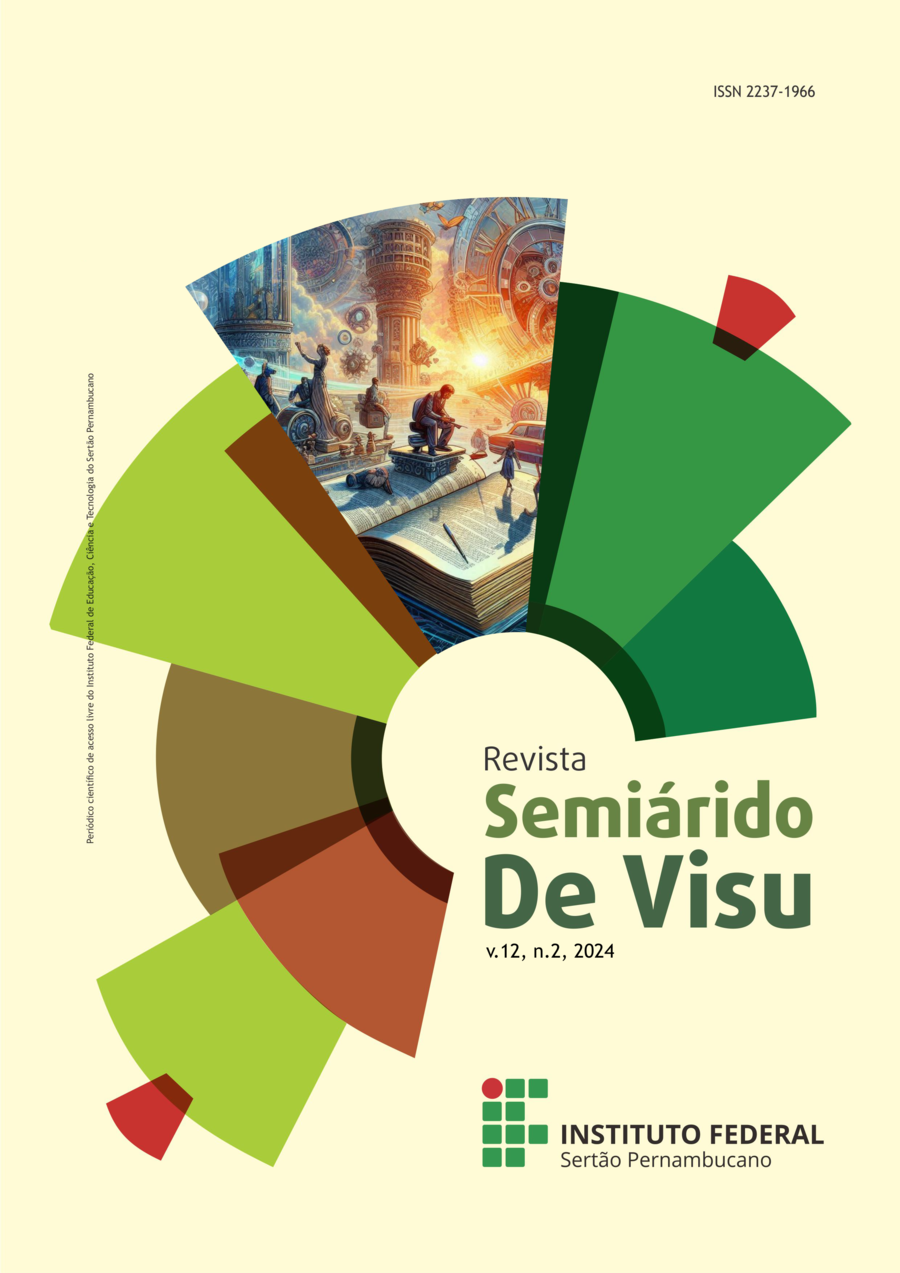Representations of zootechnics and veterinary medicine students about exogenous hormones in broilers
Visualizações: 347DOI:
https://doi.org/10.31416/rsdv.v12i2.687Keywords:
avicultura, crescimento animal, mitos na produção de frangosAbstract
In the poultry sector there have always been doubts about the use of exogenous hormones, due to the rapid growth and the shorter time required for broiler chickens to reach slaughter weight. With this, the objective was to study the representations of undergraduate students in Veterinary Medicine and Zootechnics, freshmen and seniors, on the application of exogenous hormones in broiler chickens. The qualitative and quantitative research was developed through the application of questionnaires to incoming and outgoing students of the courses in a virtual way via Google forms. The data obtained were analyzed through the application of methodological techniques suitable for the interpretation of responses from questionnaires. 87% of students consume chicken meat, justified by the cost-benefit ratio (43.5%). Regarding the use of exogenous hormones, 60.9% do not believe in the application, justifying this growth of broiler chickens to genetic improvement (61%) and nutrition (13%), however 39.1% consider that there is application of hormones, of these 89 % are studying between the 1st and 2nd period. Regarding the form of application, 57.1% believe that it is orally and 42.9% believe that it is injectable. Thus, it is concluded that the students of the Veterinary Medicine and Animal Science course are aware that there is no use of exogenous hormones in broiler chickens, however a small part of these students, especially in the initial periods of the courses, believe in the use of hormones. Demonstrating that there must be a greater effort on the part of the academy to demystify this theme.
References
Associação Brasileira de Proteína Animal – ABPA. 2022. Relatório Anual. Disponível em: . Acesso em 19 de março de 2023.
BARDIN, L. Análise de conteúdo. 4. ed. Lisboa: Edições 70, 2011.
BRASIL. Ministério da Agricultura, Pecuária e Abastecimento. Instrução Normativa n. 17. Brasília: DF, 2004.
CUNHA, C. C. Avaliação de desempenho da produção de frangos de corte no Brasil utilizando a Análise Envoltória de Dados e o Índice de Malmquist. 2014. 79 f. Dissertação (Mestrado em Agronegócios) - Universidade de Brasília, Brasília, 2014.
DE ARAUJO PIMENTA, J. L. L.; MAIA, A. M.; CARVALHO, M. L. A. M.; ALBUQUERQUE, F. C. F.; SIMONE, A. Z. D. S.; DOURADO, L. R. D. Representações sociais de estudantes de medicina veterinária e zootecnia sobre o uso de hormônios exógenos na produção de frangos de corte. Revista Científica Rural, v. 22, n. 2, p. 370-380, 2020.
FRANCISCO, D. C.; NASCIMENTO, V. P.; LOGUERCIO, A. P.; CAMARGO, L. Caracterização do consumidor de carne de frango da cidade de Porto Alegre. Ciência Rural, v. 37, p. 253-258, 2007.
GIL, A. C. Métodos e técnicas de pesquisa social. (7 ed.). São Paulo: Atlas, 2019. 230p.
HUDÁK, M.; SSEMJON, B.; MARCIN?ÁKOVÁ, B.; BUJ?ÁK, L.; NAD, P.; KORÉNEKOVÁ, B.; NAGY, J.; BARTKOVSKÝ, M.; MARCIN?ÁK, S. Effect of broilers chicken diet supplementation with natural and acidified humic substances on quality of produced breast meat. Animals, v. 11, n. 4, p. 1087, 2021.
KUMAR, F.; TYAGI, P. K.; NIR, M. A.; DEV, K.; BEGUM, J.; TYAGI, P. K.; BISWAS, A.; SAHU, B.; DINANI, O. P.; SHARMA, D. Growth pattern, lipid composition, oxidation status, and serum biochemical profile of broiler chicken fed flaxseed meal for different durations: Flaxseed meal in broiler chicken nutrition. Letters in Animal Biology, v. 1, n. 1, p. 08-18, 2021.
OLIVEIRA, A. P.; FERREIRA, M. R.; SANTANTA JÚNIOR, H. A.; SANTOS, M. S.; BRITO. J. M.; MENDES, F. B. L. Caracterização do consumidor de carne de frango em Júlio Borges-PI. Revista Científica Produção Animal, v.17, n.2, p.129-141, 2015.
PINHEIRO, T. C. Gestão da produção de frangos de corte por meio de redes neurais artificiais. 2020. Dissertação (Mestrado em Tecnologias Computacionais para o Agronegócio) - Universidade Tecnológica Federal do Paraná, Medianeira, 2020.
RICHETTI, A.; SANTOS, A. C. O sistema integrado de produção de frango de corte em Minas Gerais: uma análise sob a ótica da ECT. Organizações Rurais e Agroindustriais, Lavras, v. 2, n. 2, p. 34-43, 2010.
RODRIGUES, M. V.; YADA, M. M. Diferenças entre criação de frango de corte convencional e o sistema dark house. Revista Interface Tecnológica, v. 15, n. 2, p. 360-369, 2018.
RUFINO, J. P. F.; CRUZ, F. G. G.; SILVA, A. F.; COSTA, V. R.; BEZERRA, N. S. Desconstrução do mito sobre a utilização de hormônios exógenos na produção avícola. Revista Científica de Avicultura e Suinocultura, v. 2, n. 2, 2016.
SANTOS, F.R.; OLIVEIRA, P. R.; MINAFRA, C. S.; DUARTE, E. F.; ALMEIDA, R. R.; SILVA, W. J. Desenvolvimento digestivo e aproveitamento energético em frangos de corte. PUBVET, Londrina, V. 6, N. 18, Ed. 205, Art. 1373, 2012.
SCHEUERMANN, G. N.; THEREZA, N. A.; OLIVEIRA, C. R. A.; COELHO, H. D. S.; VILLAS BOAS, M. B.; COUTINHO, M. R. C.; GUERREIRO, J. R. Utilização de hormônios na produção de frangos: mito ou realidade. Journal of the Health Sciences Institute, v. 33, p. 94-99, 2015.
WANG, Q.; WANG, X. F.; XING, T.; LI, J. L.; ZHANG, L.; GAO, F. The combined impact of xylo-oligosaccharides and gamma-irradiated astragalus polysaccharides on the immune response, antioxidant capacity, and intestinal microbiota composition of broilers. Poultry Science, v. 101, n. 9, p. 101996, 2022.
WANG, Y.; ZHOU, X.; LIU, M; ZANG, H.; ZHANG, R.; YANG, H.; JIN, S.; QI, X.; SHAN, A.; FENG, X. Quality of chicken breast meat improved by dietary pterostilbene referring to up-regulated antioxidant capacity and enhanced protein structure. Food Chemistry, v. 405, p. 134848, 2023.
Downloads
Published
How to Cite
Issue
Section
License
Copyright (c) 2024 Revista Semiárido De Visu

This work is licensed under a Creative Commons Attribution 4.0 International License.















